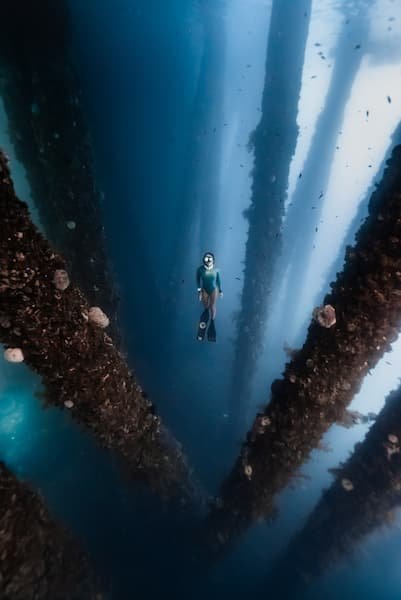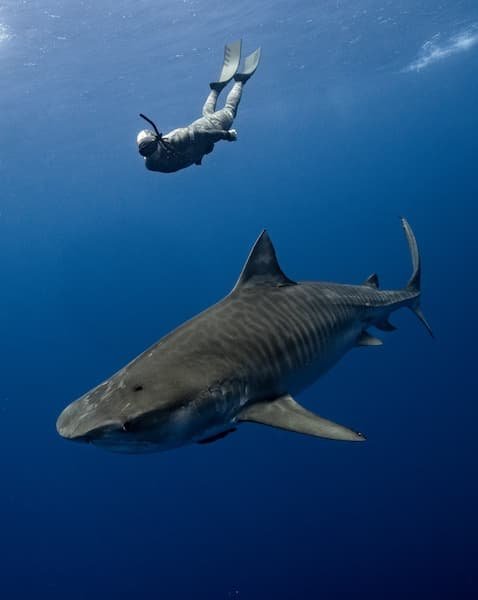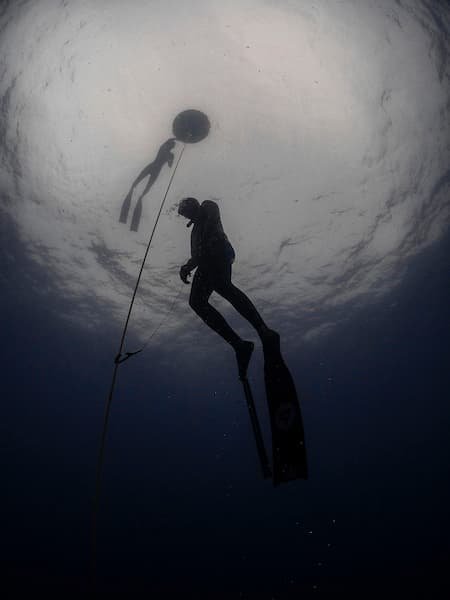
 Nick Pelios
Freediver, Creator
Nick Pelios
Freediver, Creator

 Nick Pelios
Freediver, Creator
Nick Pelios
Freediver, Creator
Freedivers pride themselves on self-reliance, but the sea respects no ego. According to Divers Alert Network’s open incident database, more than 300 dive-related mishaps were logged in the past year alone, with breath-hold accidents accounting for a growing slice of the total. Blackouts, squeezes, and cardiovascular events can strike veterans and novices alike. Add boat traffic, jellyfish, and rogue swell, and the equation stacks dangerously against the unprepared.
A full first-aid course rewrites that equation. It teaches you how to stop bleeding, open airways, deliver breaths, employ an AED, and administer emergency oxygen while help is en route. In real time those skills buy minutes, and minutes equal lives.
Shallow water blackout is the freediver’s boogeyman for good reason. It offers no warning, leaves no surface bubbles, and often occurs within arm’s reach of daylight. In June 2024, Olympic kite-foiler J. J. Rice died from a suspected blackout during recreational breath-hold practice. His fitness, youth, and professionalism did not grant immunity. Knowledge of rescue breaths, lateral recovery position, and rapid oxygen delivery might have tipped the balance.
A comprehensive first-aid curriculum drills exactly those protocols. You learn the choreography of lifting an unconscious diver’s chin, sealing the airway, counting compressions, and transitioning to pure oxygen once the mask is fitted. Practice burns the sequence into muscle memory so that panic does not overwrite reason.
For most of us, marine life interactions are fleeting flashes of colour. Yet lionfish spines, box-jelly nematocysts, sea urchin needles, and moray bites can escalate into systemic reactions. DAN’s Diving First Aid (DFA) syllabus dedicates an entire module to hazardous marine life injuries, covering everything from heat-pack therapy for stonefish venom to hot-water immersion for jelly stings.
Freedivers, especially spearos, court these hazards daily. Knowing when to irrigate, immobilise, or simply reassure can prevent infection, reduce swelling, and keep the ocean from cutting your trip short.
Carbon fins carry us to hidden coves and sea mounts miles from port. That remoteness is bliss until an accident amplifies the distance. Ambulances do not drive on water, and helicopters take time to scramble. A team versed in first-aid stretches the golden hour – the critical window before professional care – by stabilising breathing, circulation, and spinal alignment right there on the deck.
Even a basic pressure bandage or improvised splint can turn a compound fracture into a manageable evacuation. Courses teach improvisation: towels become cervical collars, fin straps turn into tourniquets, and a weight belt morphs into a pelvic binder.

Scuba divers know the mantra “Oxygen first, questions later.” Breath-hold athletes are no different. Hypoxia, squeeze-related lung injury, and decompression-like neurological symptoms all respond better when high-flow oxygen is administered early. The DAN Emergency Oxygen Provider segment shows you cylinder mechanics, non-rebreather masks, demand valves, and pulse-ox checks.
Carrying a small cylinder aboard might feel like overkill – until you need it. Think of it as a surface extension of your lung capacity.
Decompression illness is rare in freediving, yet deep bounce dives and repetitive profiles can seed micro-bubbles that trigger spinal or cerebral symptoms. A full course teaches an on-site neuro exam: testing pupils, grip strength, and heel-to-toe walk. These simple checks clarify if you’re dealing with fatigue, squeeze, or something demanding a chamber ride. They also help you brief emergency physicians quickly, shaving precious minutes once ashore.

Skills are viruses – the good kind. One trained freediver begets another. Once your circle sees you packing a trauma kit, reviewing EAPs, and drilling recovery positions, safety ceases to be uncool. It becomes baseline professionalism. Your dive club’s reputation climbs, insurance premiums may fall, and newcomers feel welcomed into a culture that values lives over likes.
Paradoxically, first-aid knowledge reduces risk-taking. Studies across adventure sports show that athletes who understand consequence make calmer, more measured decisions. You will abort earlier, hydrate better, and budget surface intervals with surgical precision. Confidence does not mean gambling; it means you can handle variables without sliding into denial.
A weekend CPR refresher is helpful, yet freedivers deserve the full menu:
Look for accreditation through DAN, EFR, Red Cross, or national medical bodies. Many freediving schools now bundle these modules into their Level 2 or Level 3 programs.

Freediving gifts us silence, clarity, and humility. Yet humility without preparation is surrender. A full first-aid course transforms fear into respect and respect into capability. It lets you chase blue dreams while honouring the beating muscle that makes those dreams possible.
So before you chase the next personal best, ask yourself: if the ocean suddenly tests you or your buddy, can you keep a heart pumping, an airway open, a brain alive? If the answer is anything short of an emphatic “yes,” book that course. Skills weigh nothing, but they carry the heaviest value in the world.
Breathe deep, dive safe, train hard. See you on the line – with an oxygen kit by your side.